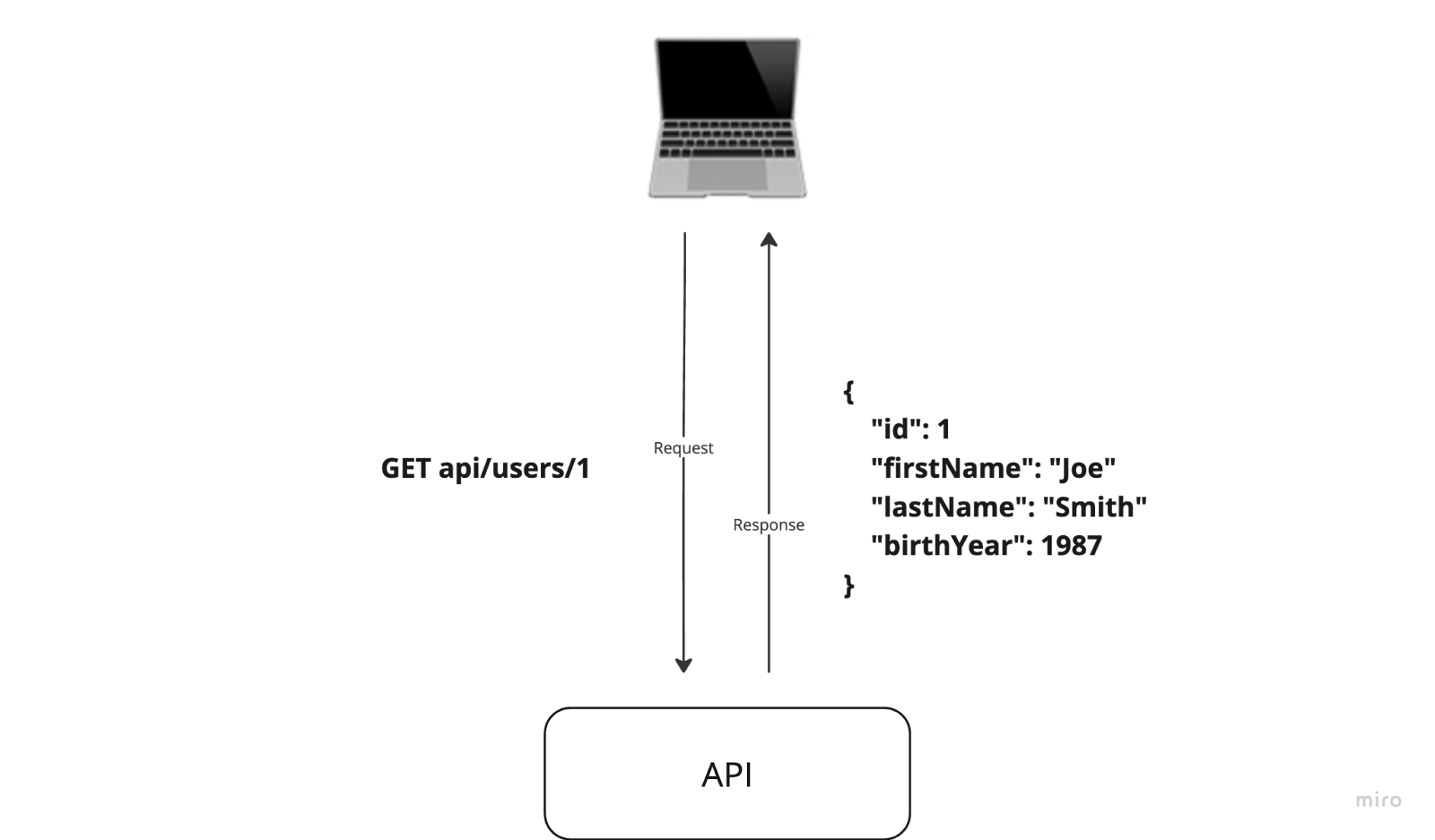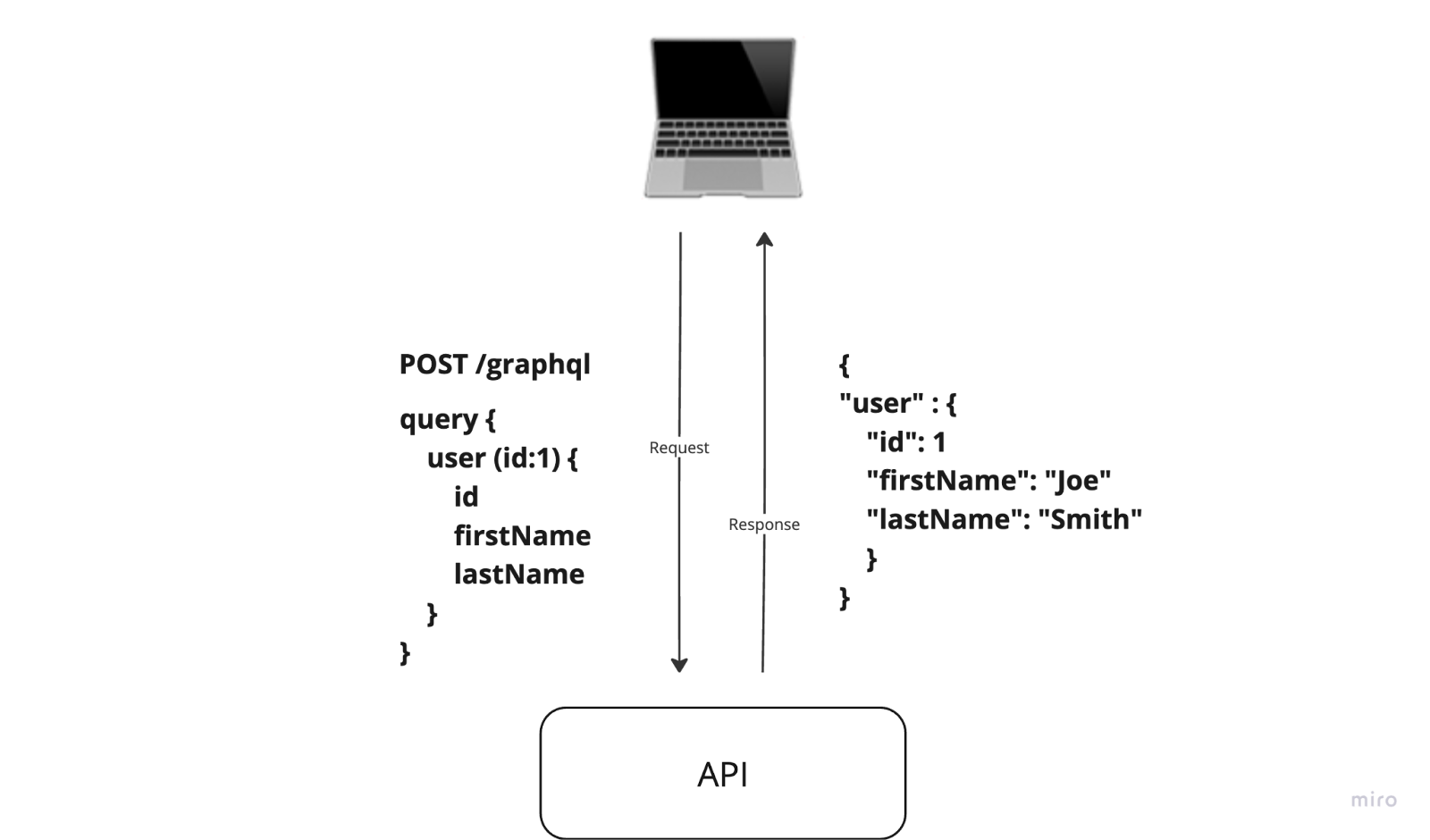Course
APIs are the backbone of modern web and mobile applications. Almost every application on your phone and every website you visit uses APIs to fetch and interact with the data displayed on the screen.
REST and GraphQL are two of the most common API design paradigms. This guide will explore the fundamental differences, benefits, and best use cases for both so you can choose which approach you like best for your own project or projects.
Hold on, what is an API?
If you are totally new to the concept of an API (Application Programming Interface), consider taking our Streamlined Data Ingestion with Pandas course. It will teach you how applications can leverage APIs to communicate with other programs - and vice versa - without either side knowing the details of each other’s inner workings. The course will make you an expert in the rules and protocols that applications use to request and exchange information.
What Is REST?
REST (Representational State Transfer) is an architectural style used to develop web services since the early 2000s. It defines a set of constraints and principles to build scalable and stateless APIs. REST APIs (also called RESTful APIs) are designed to be lightweight and can be used in any language or platform that supports HTTP.
If you are new to REST APIs, I would recommend getting used to interacting with them before developing your own. It will help you get a feel for how they work and what the best practices are. Have a look at Intermediate Importing Data in Python or Intermediate Importing Data in R to get started. Both courses have chapters on making HTTP requests, scraping the web, and other fun things.
Key concepts of REST APIs
Let's try to understand the concepts of REST.
Statelessness
Each interaction between the client and the server is independent. The server does not store any session data related to the client between requests, which means that every request from a client to a server must contain all the information needed to understand and process that request.
Resource-based
Every piece of data or functionality is treated as a resource that can be identified and manipulated through a unique identifier, typically a URI (Uniform Resource Identifier).
For example, in an e-commerce application, resources might include customers, products, orders, etc. Every resource is identified by a unique URI that acts like an address where the resource can be accessed. For example:
-
/productsmight refer to the collection of all products. -
/products/123might refer to a specific product with the ID123.
HTTP methods
RESTful APIs typically use standard HTTP methods to perform operations on resources:
-
GET: Retrieve data from a server (e.g., fetch a list of products). -
POST: Submit data to the server (e.g., create a new product). -
PUT: Update an existing resource (e.g., modify product details). -
DELETE: Remove a resource (e.g., delete a product).
A standard GET request would look like this:

Example REST request and response. Image by Author.
REST APIs also use standard HTTP status codes to communicate errors, success, and other responses. And yes, status 418 I’m a teapot does exist!
Data Formats
A RESTful API can use different formats to represent and exchange data, including JSON, XML, HTML, Plain Text, YAML, and CSV.
What Is GraphQL?
GraphQL is an open-source query language and runtime for APIs that allows clients to request exactly the data they need, and nothing more. It was originally developed internally by Meta (previously Facebook) in 2012 to optimize data fetching for their mobile applications and released for public use in 2015.
Key concepts of GraphQL APIs
Let's look at the main ideas with GraphQL.
Client-specific queries
In GraphQL, clients define the structure of the response by specifying the fields they need in their queries. This means that the client can request only the specific data it requires, avoiding over-fetching (receiving too much data) and under-fetching (receiving insufficient data).
In GraphQL, a query to get a user’s detail would look like this:

Example GraphQL request and response. Image by Author.
Queries vs. mutations
While queries are used to read data, mutations are used to write or modify data. Mutations in GraphQL are analogous to the POST, PUT, and DELETE operations in REST.
Single endpoint
Unlike REST APIs, which might have multiple endpoints for different resources, a GraphQL API typically exposes a single endpoint. This endpoint handles all the queries and mutations, making it simpler for clients to interact with the API.
Strongly typed schema
GraphQL APIs are defined by a schema, which is a strongly typed definition of the data models available, and the relationships between them. This schema serves as a contract between the client and the server, ensuring that the data returned matches the client's request and is of the expected type.
Introspection
The GraphQL schema is self-documenting. Clients can use the introspection feature to query the schema itself and discover the types, queries, mutations, and subscriptions available, making it easier to explore and understand the API.
Real-time data
GraphQL supports real-time data updates through subscriptions. Subscriptions allow clients to receive updates whenever the data they are interested in changes, which is useful for real-time applications like chat apps or live feeds.
Key Differences Between GraphQL and REST
The table below summarizes the key differences between GraphQL and REST APIs.
| Aspect | REST | GraphQL |
|---|---|---|
| Nature | Architectural | Query language |
| Data Fetching | Multiple endpoints for different resources (/products/123, /users/userA, etc.) | Single endpoint with flexible queries. |
| Versioning | Typically versioned via the URL (e.g., /api/v1/). | No versioning; changes are managed by evolving the schema while maintaining compatibility. |
| Data Types | Not strictly defined; clients may receive varying data formats. | Strongly typed schema that defines the data structure and types explicitly. |
| Error Handling | HTTP status codes are used to indicate errors. | Errors returned within the response body. Still uses HTTP status codes. |
Advantages and Disadvantages of GraphQL and REST
As with most things in life, each solution has its advantages and inconveniences.
| API Type | Pros | Cons |
|---|---|---|
| REST | - Easy to learn: Familiar to developers with web experience. - Mature tooling: Extensive documentation and security practices (OAuth, API keys). |
- Over/under-fetching: Can lead to inefficient data retrieval. - Versioning: Requires multiple API versions. - No native real-time updates: Needs additional tech like WebSockets. |
| GraphQL | - Efficient data fetching: Single request retrieves only needed data. - Self-documenting: Schema automatically serves as up-to-date documentation. - Real-time updates: Supports subscriptions for instant synchronization. |
- Steep learning curve: More complex to learn. - Caching complexity: Standard HTTP caching isn’t effective; custom caching is needed. - Security risks: Flexible queries can lead to accidental data exposure. |
Choosing Between GraphQL and REST

The choice between REST versus GraphQL will depend entirely on your project’s needs. You probably already have an inkling based on the previous section, but as a rule of thumb, you should probably use REST when you have:
- Simple data models
- Applications requiring extensive caching.
- Teams familiar with REST conventions.
- Need for predictable, standardized responses.
And use GraphQL when you deal with:
- Complex data models with nested relationships.
- Applications needing flexible, dynamic queries.
- Rapid iteration and reduced backend adjustments.
- Real-time updates.
REST and GraphQL can also be used together in hybrid solutions, so your project can benefit from simple, well-defined REST endpoints but also from the flexibility of GraphQL for more complex data retrieval. For instance, in an e-commerce app, you could use REST for authentication and user registration to benefit from standard security practices like Oauth and use GraphQL to fetch more nested and complex information like product details, categories, and user reviews.
Conclusion
So you get it: both GraphQL and REST have their strengths and weaknesses and are suitable for different scenarios. The choice between them should be guided by your project’s requirements and the complexity of your data.
That said, both tools are really fun to work with and can teach you a lot about data, so if you have the opportunity, I would recommend trying them out at some point!
And, if after reading this, you know what tool you want to use, then you are ready for the next step! Go check out our Mastering API Design: Essential Strategies for Developing High-Performance APIs blog post to learn how to design your own APIs.

I am a product-minded tech lead who specialises in growing early-stage startups from first prototype to product-market fit and beyond. I am endlessly curious about how people use technology, and I love working closely with founders and cross-functional teams to bring bold ideas to life. When I’m not building products, I’m chasing inspiration in new corners of the world or blowing off steam at the yoga studio.
Frequently Asked Questions
Can I easily migrate from REST to GraphQL or vice versa?
There is no short answer to this question, alas. It really depends on your project’s requirements so it could be straightforward or very complex. From REST to GraphQL: You'll need to design a GraphQL schema, convert REST endpoints into GraphQL queries and mutations, and adjust backend logic. From GraphQL to REST: This involves creating multiple REST endpoints, adapting data fetching methods, and implementing versioning and caching strategies.
What tooling and libraries are available for working with GraphQL and REST?
For REST, there are numerous well-established libraries and frameworks such as Express.js, Django REST framework, Flask-RESTful, and Spring Boot. They provide extensive support for building and consuming RESTful APIs. For GraphQL, popular libraries and tools include Apollo Server, GraphQL.js, Relay, and Graphene (for Python). These libraries are used for schema definition, query execution, and client-server communication.
Are there other API design paradigms besides REST and GraphQL?
Yes, other API design paradigms include SOAP (Simple Object Access Protocol) and gRPC (gRPC Remote Procedure Call). SOAP is a protocol that uses XML for message formatting and relies heavily on web services standards, making it suitable for enterprise-level applications requiring high security and transactional reliability. gRPC (developed by Google) uses HTTP/2 for transport, Protocol Buffers for serialization, and provides performance benefits with features like multiplexing, bi-directional streaming, and built-in code generation.
Can REST and GraphQL be used together in a single application?
Yes, REST and GraphQL can be used together in a hybrid approach. For instance, REST can handle simpler, well-defined endpoints like authentication and user registration, using established security practices. GraphQL can manage more complex data retrieval tasks, like fetching nested or related information.
What are the typical use cases for GraphQL's real-time data updates?
GraphQL's real-time data updates are particularly useful for applications requiring instant synchronization like chat applications, live sports score updates, stock market tickers, collaborative document editing, and any other scenario where real-time data changes need to be pushed to clients immediately.
